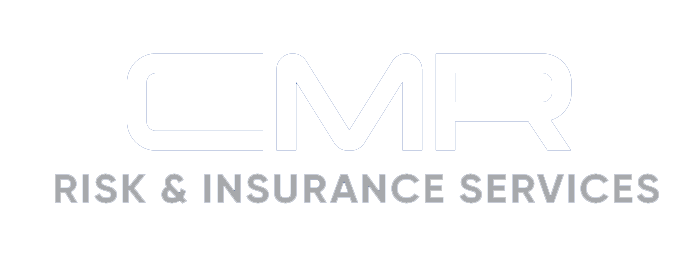Manufacturing Industry Trends to Watch in 2025

The manufacturing industry plays a critical role in driving economic growth, producing a diverse range of goods essential to global markets. In recent years, this sector has seen significant expansion fueled by increasing production demands and legislative initiatives offering funding and tax incentives. In fact, professional services firm Deloitte reported that construction spending in manufacturing—funds invested in building new or improving upon existing manufacturing facilities—reached $238 billion in June 2024, representing an all-time high. This increase in spending could lead to further industry growth in 2025.
Nevertheless, there are still a number of potential risks that, left unmanaged, may threaten the sector’s stability going forward. As such, manufacturing businesses should monitor several emerging developments that could impact the industry this year—including technological innovations, cybersecurity threats, supply chain concerns, and regulatory and compliance challenges—and adjust their risk management programs accordingly. This article highlights key manufacturing sector trends to watch in 2025 and outlines strategies to help navigate them.
Technological Innovations
The manufacturing sector has experienced rapid technological advancements over the past few years, and there is no sign of this stopping anytime soon. According to a recent survey conducted by business advisory firm Eide Bailly, the majority (94%) of manufacturing companies plan to increase their technology spending to further enhance their operations.
The sector’s latest innovations primarily center around Industry 4.0 technology, which refers to a variety of digital solutions that can help automate certain manufacturing processes, streamline workflows, promote sustainability and maximize productivity. Examples of such technology include artificial intelligence (AI), smart machinery, digital sales systems, equipment monitoring software and analytics platforms.
This technology can collect and assess vast amounts of information in minutes, giving manufacturing companies the resources and knowledge necessary to make more data-driven decisions. From there, manufacturing businesses can accomplish goals such as simplifying certain aspects of the production line, reducing operational waste, limiting carbon emissions and optimizing energy consumption. This technology can also evaluate equipment performance in real time and conduct predictive maintenance as needed, minimizing the risk of potential breakdowns and disruptions.
In addition to these technological advancements, the emergence of the metaverse—an immersive online environment—has empowered some manufacturing companies to test new and innovative software and train production robots in virtual scenarios before launching them in the real world. In some cases, metaverse-based tools can even assist frontline manufacturing workers in performing their job duties through hands-free operations and voice commands.
As technology continues to advance throughout the industry, manufacturing companies should stay on top of the latest innovations and adjust their operations as needed to incorporate these solutions. Failure to do so could cause them to fall short among their competitors and miss out on possible business opportunities. It’s worth noting that these innovations are not without challenges. Implementing new technology requires substantial capital investment, workforce training and ongoing maintenance. Further, such technology may expand potential attack surfaces and avenues for cybercriminals. As a result, manufacturing companies must carefully weigh the costs and benefits of adopting these solutions and ensure they have the resources necessary to manage associated risks prior to implementation.
Cybersecurity Threats
As previously mentioned, advancing industry technology, although beneficial, comes with additional cybersecurity exposures. What’s worse, some of the sector’s latest technology is evolving so quickly that it’s outpacing the software being developed to protect it, leaving it susceptible to cyberattacks. Especially as manufacturing businesses grow more reliant on technology to conduct essential operations and their digital supply chains become increasingly interconnected, cyberattacks have the potential to cause devastating disruptions and contribute to costly losses.
One of the most prevalent cybersecurity threats impacting manufacturing companies is ransomware. These incidents—which entail cybercriminals compromising a device or server and demanding a large payment be made before restoring the technology (as well as any data stored on it)—are one of the most damaging cyberattack methods, incurring an average of $353,000 in total losses per incident, according to a recent report from security service provider Coalition. Because manufacturing companies play an integral part in many global supply chains, cybercriminals often target this industry when launching ransomware in an effort to cause more widespread losses. These incidents have been on the rise for nearly a decade, and this trend is likely to continue in 2025 and beyond, paving the way for additional losses across the sector.
To help combat ransomware threats and other cybersecurity risks in the year ahead, it’s best for manufacturing businesses to bolster their digital defenses. In particular, manufacturing companies should prioritize strong cyber hygiene practices. This may include providing employees with routine cyber training, enabling multifactor authentication for access to all workplace accounts and devices, leveraging endpoint detection and response solutions, installing advanced antivirus and malware protection software, utilizing patch management systems to ensure regular software updates, segmenting and segregating critical networks, developing end-of-life software management policies, implementing email authentication technology, conducting frequent data backups and establishing cyber incident response plans.
Supply Chain Concerns
While the large-scale supply chain disruptions that occurred throughout the COVID-19 pandemic have dwindled, certain manufacturing inventory shortages and sourcing issues for raw materials will likely press on for the foreseeable future. These supply chain difficulties are tied to a number of factors, including global transportation delays due to widespread geopolitical tensions, cyberattacks and extreme weather.
The impacts of these difficulties on the manufacturing sector are twofold. First, raw material scarcities can minimize supply chain transparency, potentially causing communication breakdowns regarding available inventory and creating confusion amid production processes. Second, derailed deliveries for raw materials may prolong production timelines and delay the transportation of finished goods, thus elevating total logistics costs and compounding operational expenses.
In light of these concerns, it’s imperative for manufacturing businesses to reduce their risks by fostering supply chain resiliency. This may entail implementing more advanced inventory management policies, maintaining an adequate reserve of essential materials, building strong supplier relationships, diversifying supply chains by working with trusted vendors located across different geographic areas, investing in tracking technology to better monitor material shipments and uphold supply chain visibility, and developing contingency plans to help manage possible disruptions.
In some cases, manufacturing companies may also want to consider offshoring or nearshoring. The former strategy involves moving production processes to a different location (typically out of the country), while the latter involves shifting these processes to a nearby area. Depending on a company’s unique operations, these strategies can sometimes help diminish supply chain disruptions, boost operational efficiencies and lower production costs.
Regulatory and Compliance Challenges
The legal landscape for the manufacturing industry is ever-changing. The last few years have seen increased regulatory scrutiny at the local, federal and international levels, particularly as it pertains to AI, data privacy and environmental sustainability. For example, the U.S. Securities and Exchange Commission recently created new standards for publicly traded companies on AI-related and environmental disclosures, requiring additional reporting on their AI development and usage, carbon emissions, operational waste, and green initiatives. At least 15 states have also implemented their own legislation on AI usage in various work settings and enforced stricter data privacy laws, affecting any manufacturing businesses that utilize this technology or make data-driven decisions. Moving forward, it’s certainly possible that other states will follow suit.
While the European Union’s General Data Protection Regulation has been in place for several years, the rising popularity of AI has motivated some regulators to reinforce that this legislation also applies to any sensitive information collected, processed and stored via such technology, ultimately impacting any manufacturing businesses that leverage AI within their international operations. Additionally, upcoming changes to global tax laws, tariffs and trade policies could have considerable effects on manufacturing companies’ existing sourcing issues for raw materials and related production processes, especially those with supply chains that extend overseas.
Altogether, manufacturing businesses that neglect to keep up with these shifting regulations and modify their operations as needed could face serious noncompliance fines and penalties. With this in mind, manufacturing companies should consult trusted legal counsel to review applicable local, federal and international laws and ensure their policies and procedures remain compliant.
Conclusion
Several trends are currently impacting the manufacturing sector, emphasizing the importance of staying informed and adaptive. By tracking these developments and mitigating any associated exposures, manufacturing businesses can effectively position themselves to promote long-term growth and boost operational success.
Contact us today for additional industry-specific risk management guidance.
Article Published By: Zywave, Inc.
